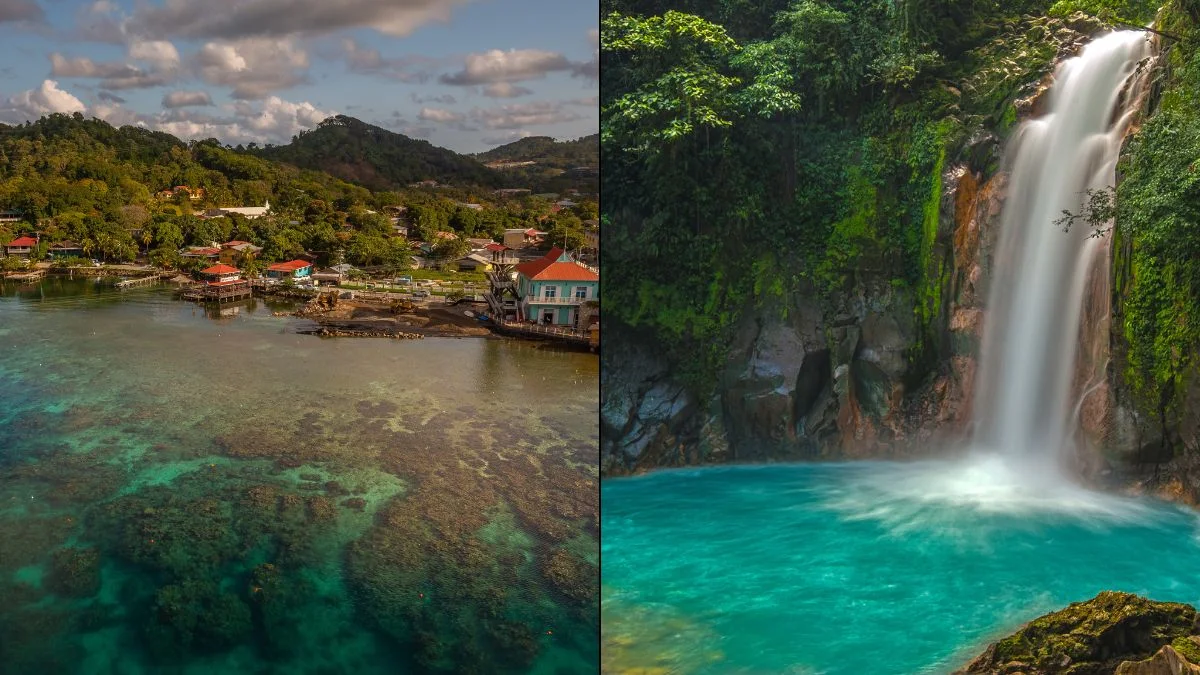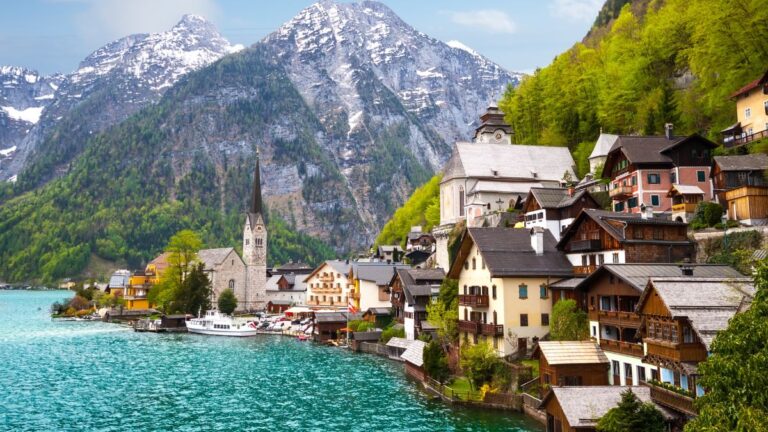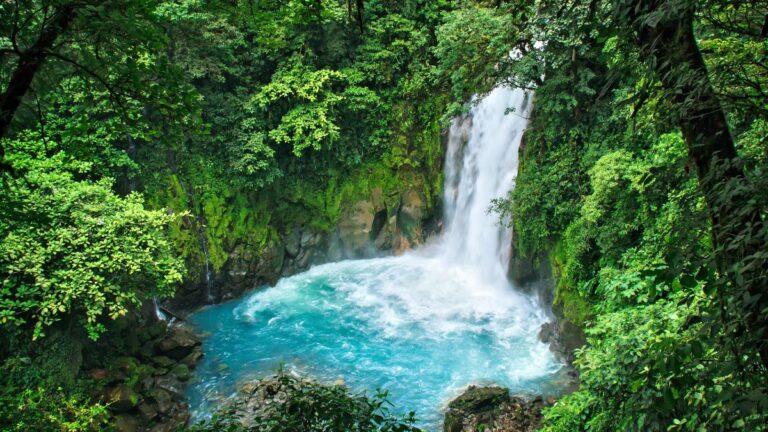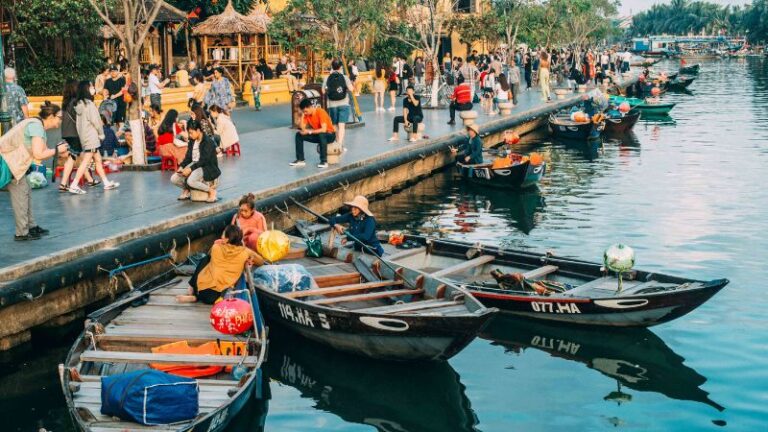Honduras vs. Costa Rica: Comparing Two Central American Travel Gems

As participants in Amazon Associates and other programs, we earn from qualifying purchases. This comes at no additional cost to you. For more details, see our Affiliate Disclosure.
When you think of Central American travel, Honduras and Costa Rica often come to mind. Both countries have much to offer, but they’re unique in their own ways. Honduras is known for its rich history and vibrant culture, while Costa Rica is famous for its stunning biodiversity and eco-friendly tourism. This article takes you on a journey to explore what makes each country a special destination for travelers.
Cultural Riches: Exploring the History and Traditions of Honduras and Costa Rica
Honduras and Costa Rica, two jewels of Central America, are not just about breathtaking landscapes; they are also treasure troves of cultural richness. Both countries boast a vibrant tapestry of history and traditions, yet each presents its unique flavor of cultural experiences. From ancient ruins to lively festivals, the cultural heritage of these nations is both diverse and captivating.
Honduras: A Blend of Ancient and Modern
In Honduras, the past and the present merge beautifully. The country is home to Copán, one of the most significant Mayan archaeological sites, offering a glimpse into ancient civilizations. But it’s not just about the ruins; Honduran culture is also alive in its bustling markets, where traditional crafts and colorful textiles tell stories of generations. Moreover, the Garifuna communities along the Caribbean coast celebrate their African-Indigenous heritage through music, dance, and cuisine, creating a unique cultural landscape.
The modern side of Honduras is equally compelling. Tegucigalpa, the capital, is a blend of colonial history and contemporary lifestyle. Here, museums and art galleries showcase the nation’s history and artistic talents. Festivals like La Feria Juniana in San Pedro Sula highlight the joyous spirit of the Honduran people, blending music, dance, and food into unforgettable celebrations.
Costa Rica: Rich Traditions in a Natural Paradise
Costa Rica’s cultural identity is deeply intertwined with its commitment to nature and sustainability. This is a country where conservation efforts and respect for the environment are a way of life, influencing its arts, crafts, and traditions. The indigenous communities, such as the Boruca, are known for their intricate masks and textiles, symbolizing the country’s rich heritage and connection to nature.
In addition to its indigenous roots, Costa Rica’s culture is also shaped by its colonial past. Cities like Cartago and Heredia are dotted with historic churches and buildings, reflecting the architectural styles of Spanish colonialism. Festivals, such as the vibrant Carnival of Limón and the religious festivities of Semana Santa, showcase the blend of indigenous, European, and African influences that define Costa Rican culture.
Choosing between Honduras and Costa Rica for their cultural offerings is a challenge as both have distinct and rich cultural heritages. Honduras dazzles with its ancient Mayan ruins and vibrant Garifuna culture, while Costa Rica impresses with its deep-rooted connection to nature and diverse cultural influences. For history enthusiasts, Honduras might hold a slight edge with its archaeological wonders, but for those who cherish a blend of nature and culture, Costa Rica is a compelling choice.
Natural Wonders: A Look at the Diverse Ecosystems
Honduras and Costa Rica, nestled in the heart of Central America, are renowned for their stunning natural landscapes and diverse ecosystems. From lush rainforests to vibrant coral reefs, each country offers a unique array of natural wonders, attracting nature enthusiasts and adventure seekers alike. This section explores the distinctive natural environments of both Honduras and Costa Rica, revealing the beauty and diversity of their flora and fauna.
Honduras: Rich Biodiversity and Untouched Beauty
Honduras is a hidden gem for nature lovers, boasting a wide range of ecosystems. The country is home to the Rio Platano Biosphere Reserve, a UNESCO World Heritage Site, which encompasses tropical rainforests, mangrove swamps, and coastal lagoons. This reserve is a sanctuary for diverse wildlife, including jaguars, macaws, and the elusive tapir. The Bay Islands, another highlight, are a paradise for snorkelers and divers, offering some of the best coral reefs in the Caribbean, teeming with vibrant marine life.
Inland, Honduras’s national parks, like Pico Bonito and Celaque, offer rugged mountainous landscapes, cloud forests, and cascading waterfalls. These parks are not only vital for biodiversity conservation but also provide spectacular hiking and bird-watching opportunities. Honduras’s natural beauty is relatively untapped, offering a sense of discovery and adventure to those who explore its wilderness.
Costa Rica: A Model of Ecotourism and Conservation
Costa Rica is synonymous with ecotourism and is a global leader in conservation efforts. Over a quarter of its land is protected, ensuring the preservation of its rich biodiversity. The Monteverde Cloud Forest Reserve is a haven for birdwatchers, famously home to the resplendent quetzal. Tortuguero National Park, accessible only by boat or plane, is a crucial nesting site for sea turtles and a mosaic of diverse habitats, from rainforests to mangroves.
The country’s commitment to sustainability is evident in its well-managed national parks and reserves. Arenal Volcano National Park, with its iconic volcano and hot springs, and Corcovado National Park, known as one of the most biodiverse spots on the planet, offer unforgettable encounters with nature. From spotting sloths in the wild to hiking in the lush rainforests, Costa Rica’s landscapes are both stunning and sustainably managed.
While both Honduras and Costa Rica offer remarkable natural experiences, Costa Rica may have the edge for travelers prioritizing ecotourism and well-developed conservation programs. Its diverse ecosystems are not only abundant but also meticulously preserved and accessible. Honduras, with its less-explored territories, appeals to those seeking off-the-beaten-path adventures in nature.
Adventure Awaits: Outdoor Activities in Honduras and Costa Rica
For the adventure-seeking traveler, Honduras and Costa Rica are like playgrounds filled with thrilling activities set against stunning backdrops. Whether it’s diving into the depths of the ocean or soaring through the treetops of a rainforest, these two countries offer a plethora of options for those looking to add a dose of adrenaline to their travel experience. This section explores the array of outdoor activities available in Honduras and Costa Rica, showcasing how each country caters to the spirit of adventure.
Honduras: A Haven for Divers and Hikers
Honduras is rapidly becoming a go-to destination for adventurous travelers, especially those who are passionate about water sports. The Bay Islands, particularly Roatán, are world-renowned for scuba diving and snorkeling, offering access to one of the most vibrant sections of the Mesoamerican Barrier Reef. The clear waters here are home to a spectacular array of marine life, including whale sharks, which makes for an unforgettable underwater experience.
On land, Honduras’ rugged terrain is perfect for hiking and exploration. Pico Bonito National Park, with its dense rainforests and challenging trails, is a paradise for hikers seeking solitude and natural beauty. The park also offers opportunities for white-water rafting on the Cangrejal River, providing an exhilarating experience for thrill-seekers. Honduras, with its less commercialized adventure scene, offers a raw and authentic outdoor experience.
Costa Rica: A Playground for Eco-Adventurers
Costa Rica is a pioneer in combining adventure with eco-consciousness. The country’s diverse landscapes provide a perfect setting for a variety of outdoor activities. Ziplining through the Monteverde Cloud Forest offers an unparalleled view of the rich biodiversity from above, while the rapids of the Pacuare River present some of the best white-water rafting experiences in the world.
For wildlife enthusiasts, Costa Rica offers unique experiences like guided night tours in the rainforest, where you can observe nocturnal creatures in their natural habitat. The beaches of the Nicoya Peninsula are not only stunning but also ideal for surfing, catering to both beginners and experienced surfers. In Costa Rica, every adventure activity is designed with an awareness of the surrounding environment, ensuring a responsible and sustainable approach to outdoor fun.
When it comes to outdoor activities, both Honduras and Costa Rica have their unique strengths. Honduras offers a more off-the-beaten-path experience, ideal for those seeking authentic and less crowded adventures, especially in diving and hiking. Costa Rica, on the other hand, excels in providing a wide range of eco-adventure activities, making it a top choice for travelers who prefer well-organized and sustainable adventure experiences. The decision ultimately depends on what kind of adventure the traveler is seeking – the raw, uncharted thrills of Honduras or the diverse, eco-friendly escapades of Costa Rica.
Culinary Journey: Taste the Local Flavors
A trip to Central America is incomplete without indulging in the local cuisine, and both Honduras and Costa Rica offer a delectable array of traditional dishes that reflect their rich cultural heritage. From savory to sweet, the culinary landscapes of these countries are as diverse as their natural terrains, promising a gastronomic adventure for every palate. In this section, we delve into the flavors and specialties of Honduras and Costa Rica, exploring how each country’s cuisine offers a unique taste of Central American culinary delights.
Honduras: A Melting Pot of Flavors
Honduran cuisine is a vibrant mix of indigenous, African, and Spanish influences, resulting in a rich tapestry of flavors. One must-try dish is Baleadas, a simple yet delicious staple made of flour tortillas filled with beans, cheese, and cream. Often enjoyed as a hearty breakfast or a quick snack, Baleadas embody the soul of Honduran comfort food. Another iconic dish is Plato Típico, a sampler plate that typically includes grilled meat, fried plantains, rice, beans, and salad, offering a taste of the country’s diverse culinary elements in one meal.
Seafood plays a significant role in the Honduran diet, especially along the Caribbean coast and the Bay Islands. Coconut-based seafood soups and stews, like Sopa de Caracol (conch soup), highlight the fresh, local catch with a blend of unique spices and flavors, providing a truly Honduran culinary experience. The versatility and depth of Honduran cuisine, from street food to fine dining, provide a culinary journey that is both diverse and deeply rooted in its cultural heritage.
Costa Rica: A Fresh and Wholesome Approach
Costa Rican cuisine is characterized by its freshness and simplicity, focusing on locally sourced ingredients. The national dish, Gallo Pinto, a combination of rice and beans seasoned with cilantro, onions, and peppers, is a staple at every meal, showcasing the importance of simple, wholesome ingredients in Costa Rican cooking. Casado, another popular dish, typically consists of rice, beans, plantains, salad, and a choice of meat or fish, representing the balance and simplicity of the Costa Rican diet.
The use of fresh fruits is prominent in Costa Rican cuisine, both in cooking and in beverages. Tropical fruits like mango, pineapple, and papaya are often used in smoothies, desserts, and salads, adding a natural sweetness and vibrancy to the food. For a unique culinary experience, visitors must try the traditional Olla de Carne, a hearty and flavorful stew made with meat, tubers, and vegetables, showcasing the country’s rich agricultural produce. Costa Rican cuisine, with its emphasis on fresh, natural ingredients, offers a refreshing and health-conscious approach to eating.
While both Honduras and Costa Rica offer tantalizing culinary experiences, the choice between them depends on personal taste preferences. Honduran cuisine, with its rich, diverse flavors and emphasis on seafood and hearty dishes, appeals to those seeking a bold and culturally rich dining experience. Costa Rican cuisine, on the other hand, will delight those who prefer lighter, fresher meals with an emphasis on natural ingredients and simplicity. Both cuisines beautifully reflect their respective cultures and environments, making them equally worthy of exploration.
Traveler’s Tips: Navigating Your Visit to Honduras and Costa Rica
Traveling to Honduras and Costa Rica can be an enriching and unforgettable experience, but like any international journey, it requires some preparation and knowledge about the destinations. Both countries have their unique attributes and challenges, and understanding these can greatly enhance your travel experience. In this section, we provide essential tips for navigating your visit to these beautiful Central American nations, covering everything from safety precautions to cultural etiquette, ensuring your adventure is as smooth and enjoyable as possible.
Honduras: Tips for a Safe and Authentic Experience
- Stay Informed and Cautious: Honduras can offer an authentic experience, but it’s important to stay informed about safety. Stick to well-traveled tourist areas and consider hiring local guides for more remote excursions.
- Embrace Local Transportation: For short distances, try the local ‘tuk-tuks’ or taxis, but ensure they are registered. For longer journeys, comfortable and affordable coach services are available.
- Learn Basic Spanish: While English is spoken in tourist areas, knowing basic Spanish phrases can enrich your interaction with locals and help in remote areas.
- Respect Local Customs: Hondurans are warm and friendly, but they also appreciate respect for their culture and traditions. A polite demeanor and dress modestly in rural or conservative areas.
- Try Street Food Safely: Street food is a must-try, but choose vendors that are busy and appear clean. This indicates good turnover of fresh produce.
Costa Rica: Tips for an Eco-Friendly and Enjoyable Trip
- Eco-Conscious Travel: Costa Rica is a leader in sustainable tourism. Participate in eco-friendly activities and support businesses that practice sustainability.
- Health Precautions: Stay hydrated and use sunscreen regularly. Be cautious with tap water; it’s generally safe in urban areas but less so in rural places.
- Currency and Payments: While USD is widely accepted, having local currency (Costa Rican colón) is useful for small purchases. Credit cards are accepted in most places, but it’s good to carry some cash.
- Be Prepared for the Weather: Costa Rica’s weather can be unpredictable. Pack for both rain and shine, especially if you’re visiting rainforests or coastal areas.
- Enjoy the Biodiversity Responsibly: When visiting national parks or reserves, stay on designated paths, don’t feed the wildlife, and always follow the guidelines provided by guides or park authorities.
By following these tips, travelers can ensure a more fulfilling and hassle-free experience in Honduras and Costa Rica, making the most of their Central American adventure.






